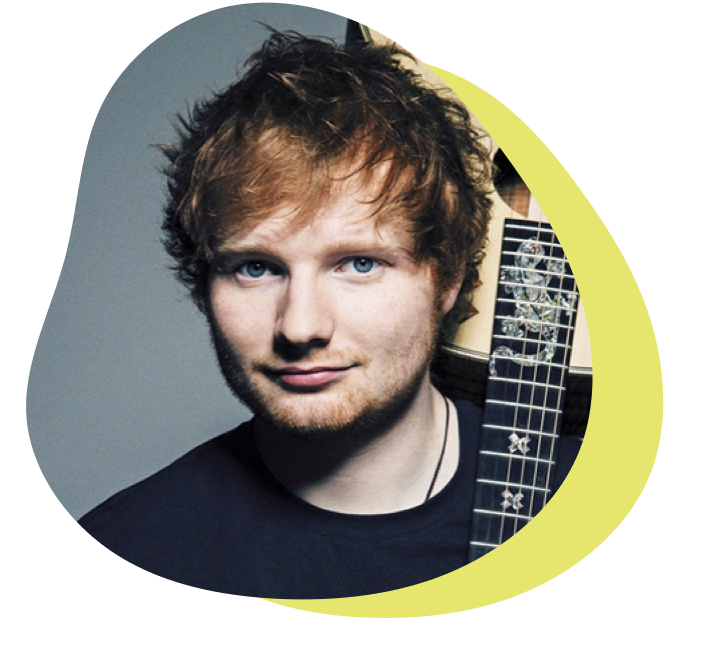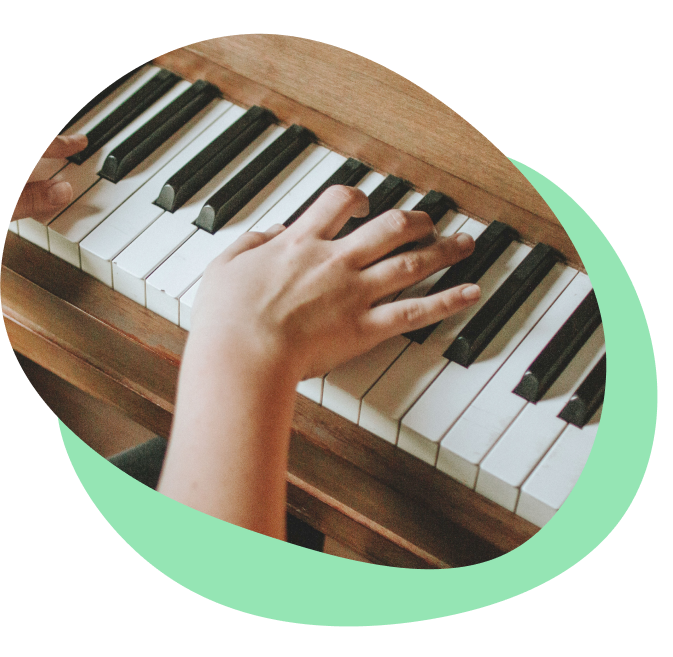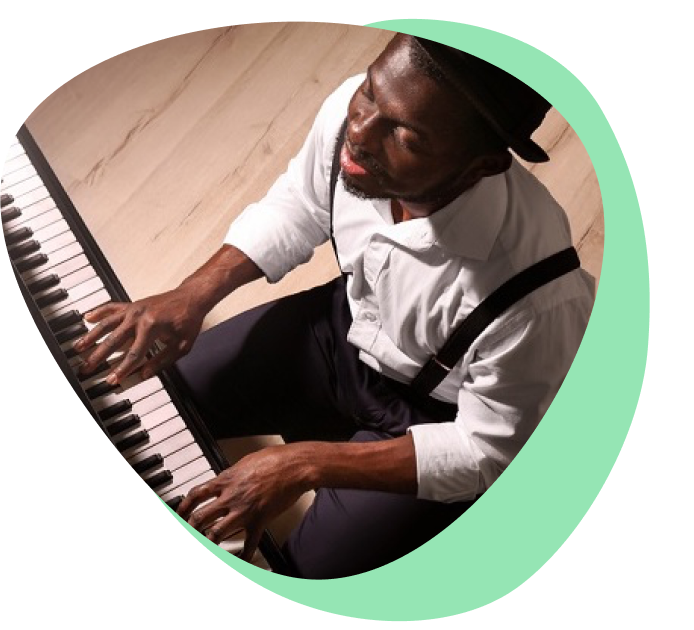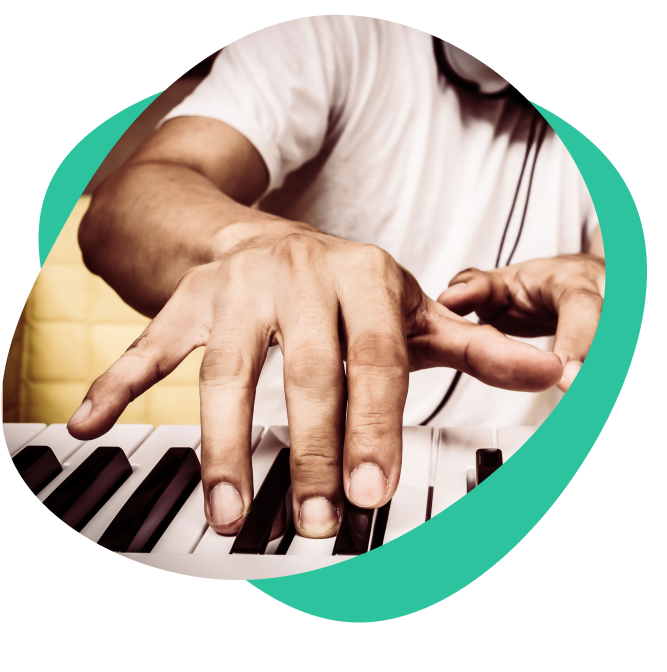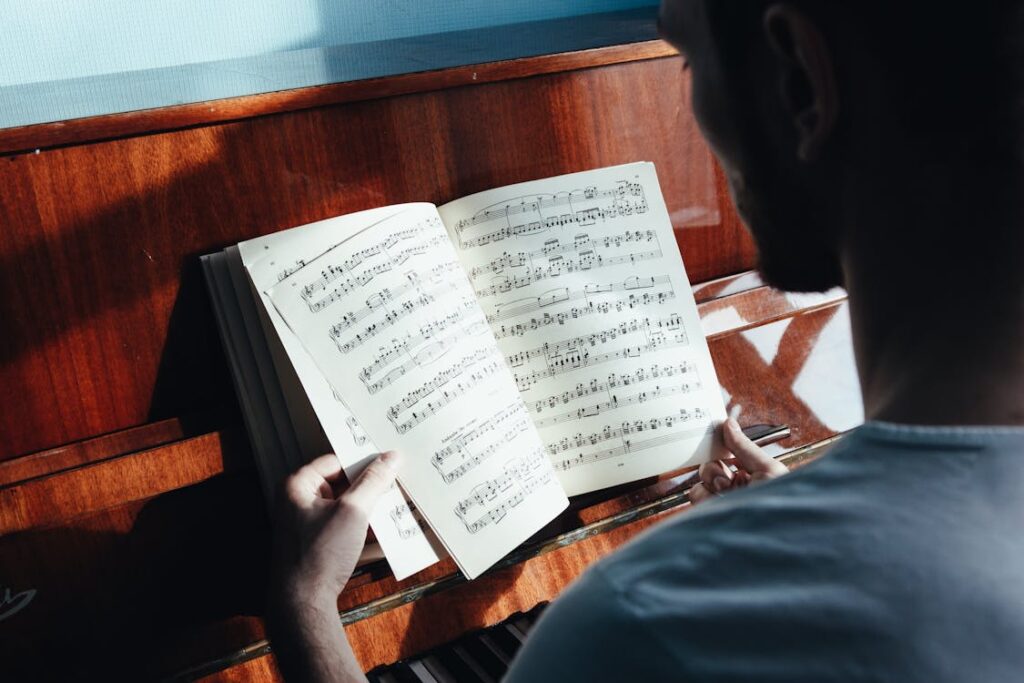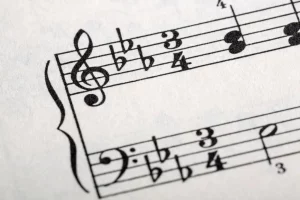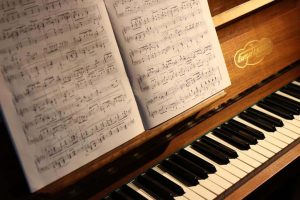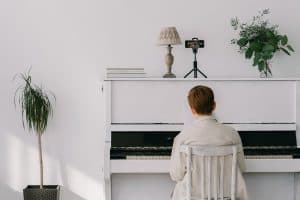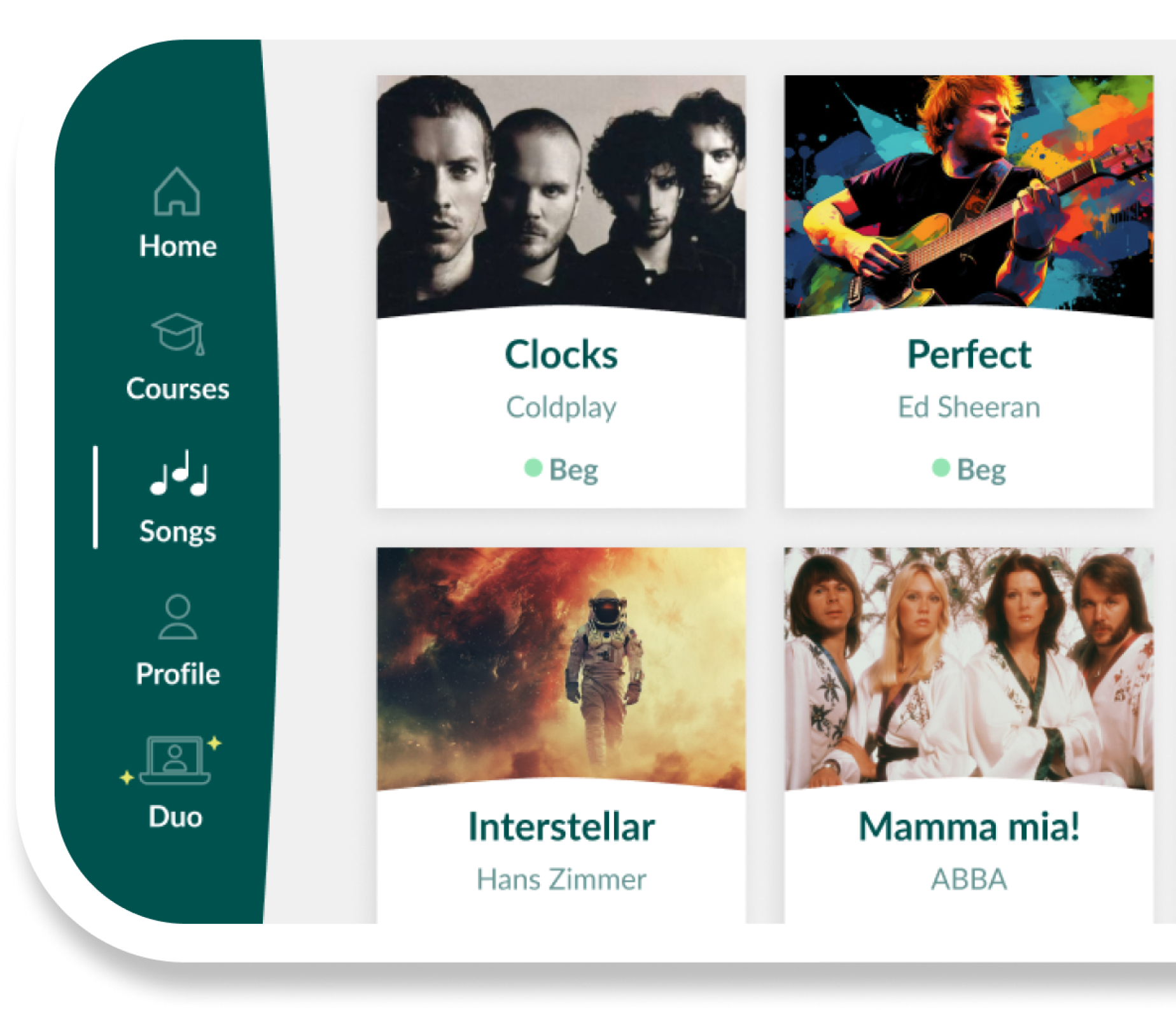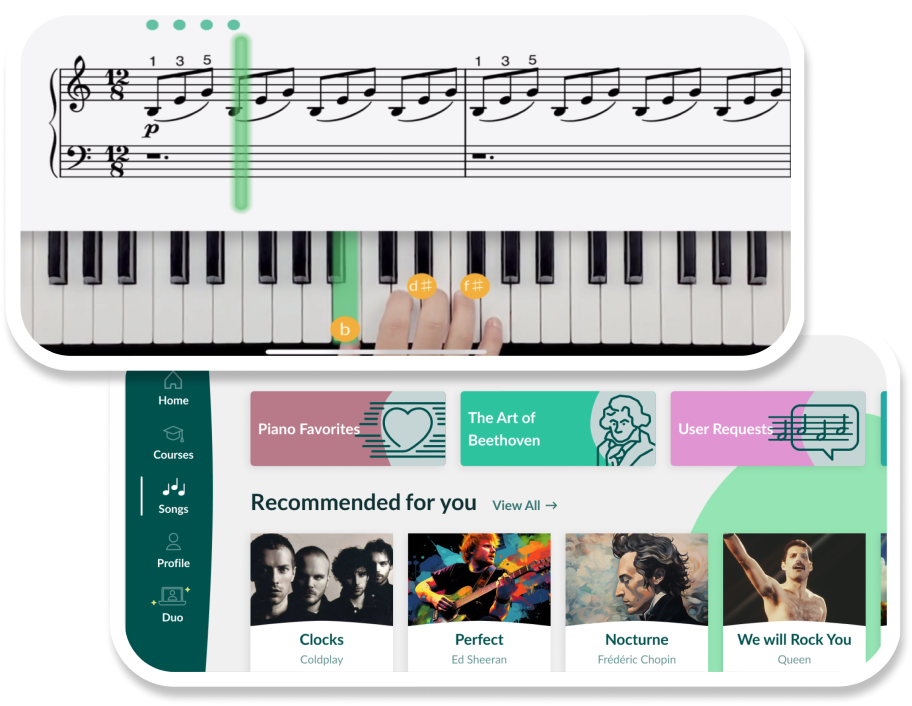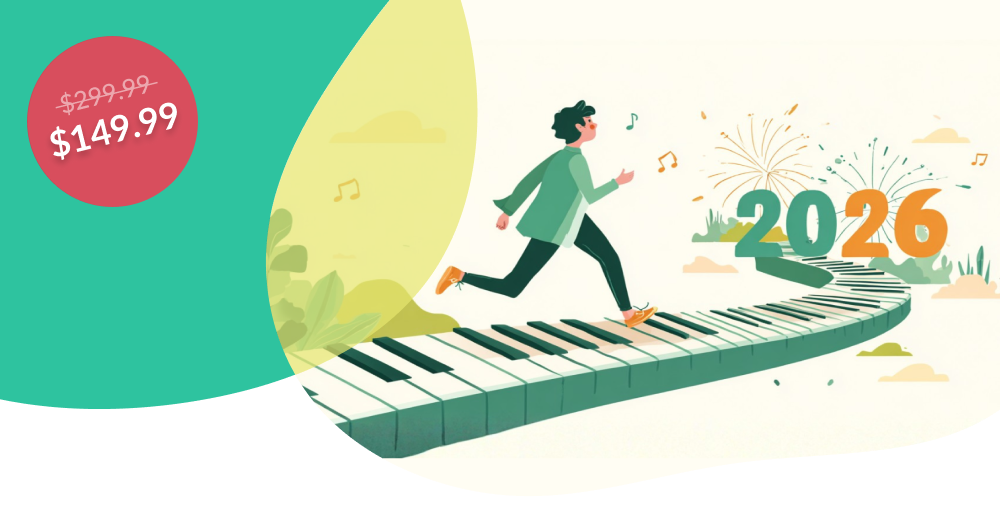Why learn how to read sheet music?
Reading sheet music is normally considered a key skill for a musician of any instrument, not just aspiring pianists. Sheet music is the written form of music, so it’s how pieces and songs are preserved by the composer. Then you, the learner, can take that sheet music and read it in order to play the song. You don’t have to learn sheet music in order to play piano but it’s very useful knowledge to have. If you can read sheet music, you can easily find and play new songs, whether it’s playing Happy Birthday at a party or Christmas carols during the holidays
The basics of sheet music
Sheet music is made up of several parts. One of the first things you’ll see is that for piano music, there are normally 2 rows, one on top of the other, each of which is made up of five lines. These sections of lines are called the staff and it’s what the notes are written on.

The 2 staffs which make up the main line for piano sheet music are the treble and bass clef. The treble clef is normally the line on the top and you can see that the symbol at the start of the staff looks quite ornate. The bass clef symbol is simpler and looks like half of a heart. Ordinarily, you would play notes written in the treble clef with your right hand and notes written in the bass clef in your left. The note you can see on the score above in between the 2 staffs is middle C.
How sheet music corresponds to the piano keys
Notes themselves look like bubbles or dots which are then placed either on or in between the five lines of the staff. The different lines and spaces correspond to different keys on the piano:
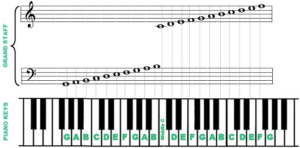
There are a few mnemonic devices you can use to help you remember which notes on the staff match which notes on the keyboard. For example, for the notes on the lines in the treble clef, you can use Every Good Boy Deserves Fudge (EGBDF). So a note on the lowest line of the treble clef is an E, the next one up is a G and so on. For the notes in the spaces on the treble clef, you can use the word “face” (FACE).


Now onto the bass clef. For the spaces on the bass clef, you can use All Cows Eat Grass (ACEG) and for the lines Good Boys Deserve Fudge Always (GBDFA).
Bass clef mnemonics
Once you’ve got accustomed to recognising the notes on the staff, it’ll become a lot easier to find them on the piano and then you can start making music!
How notes show rhythm
You might have seen on sheet music that the bubbles that make up the notes don’t all look the same, some are filled in and some are empty. This is how rhythm is shown in sheet music. This tells you how long to play the note for and makes up the structure of the bars (the individual sections which are marked by lines on the staff).
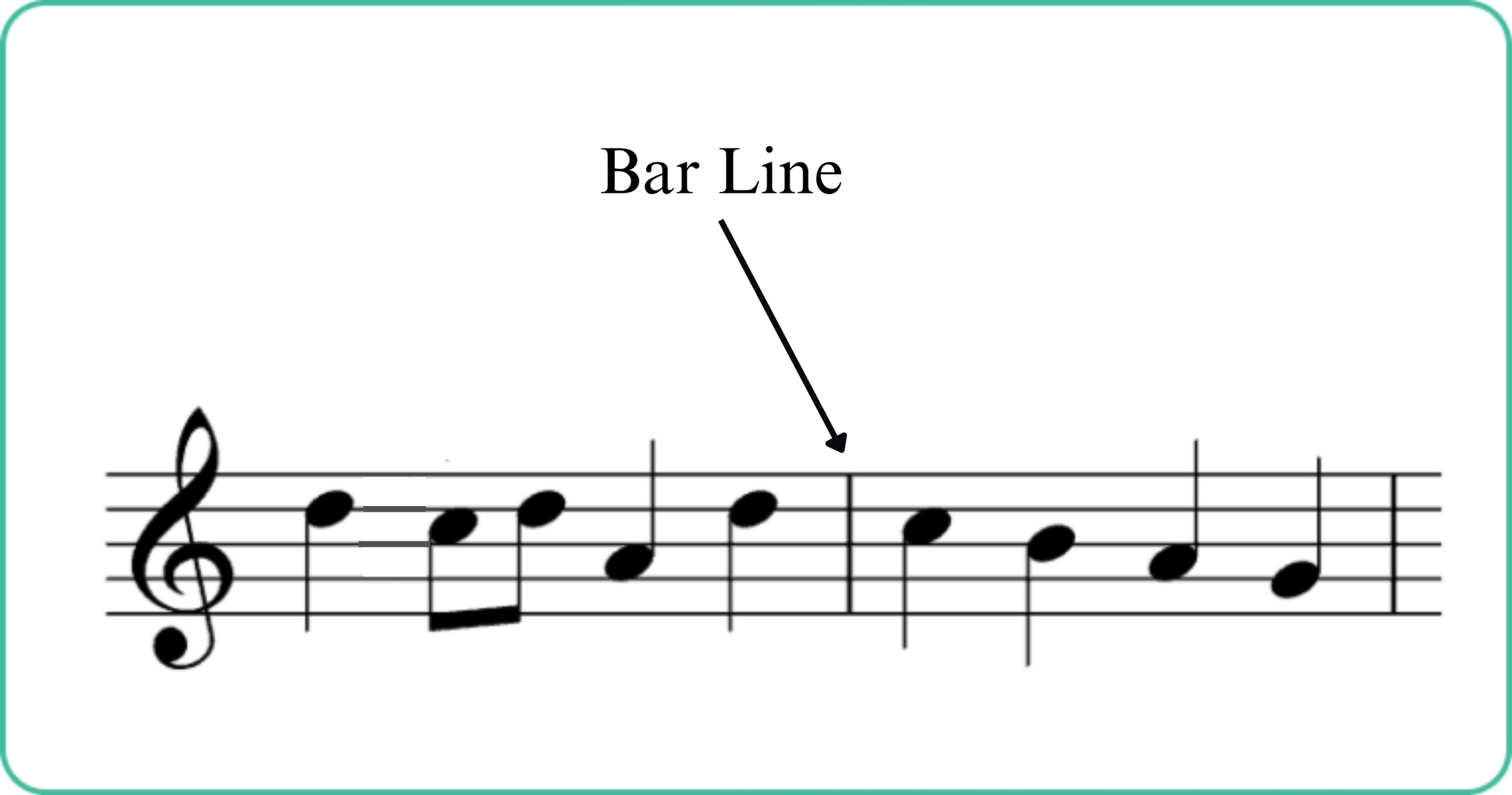
Note lengths
A single bubble with no lines coming off it not filled in, is a whole note and lasts for four counts. A half note is a bubble which is not filled in but which has a stem (a little line coming off the edge of the bubble) lasts for 2 counts and a quarter note has a bubble which is filled in and has a stem. This lasts for one count.
You can find the counts by knowing the tempo of the piece you’re playing. This is normally written on the sheet music as well. The tempo is like the beat of the song, it tells you how fast to play and therefore how long each of your notes should be. So a quarter note should last for one beat at the tempo of the song.
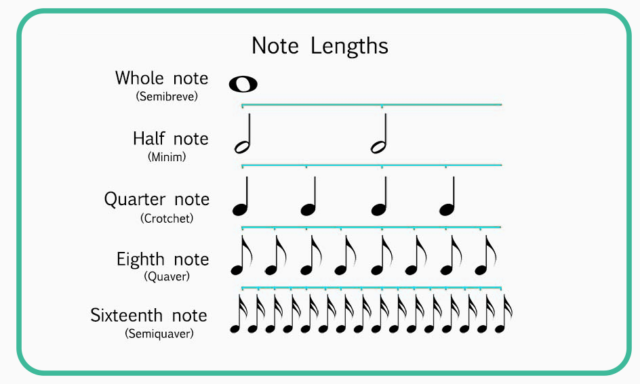
And that’s what you need to know to start reading sheet music. There are other topics you’ll encounter as you progress like time signatures, key signatures and accidentals but now you have all of the knowledge you need to play your first song! Take a look at Skoove’s beginner song arrangements to find the perfect one to get you started. Happy playing!



